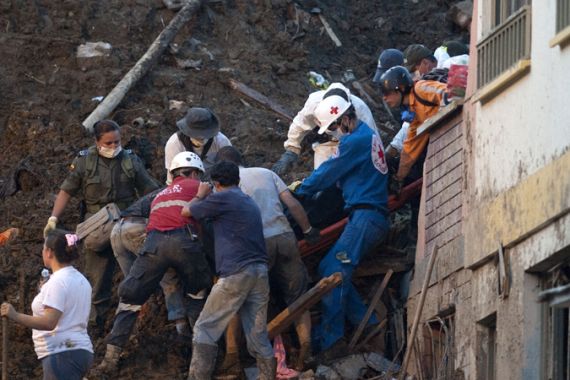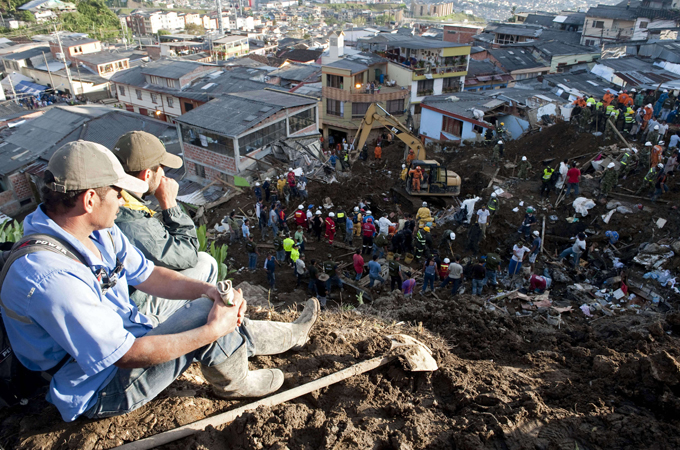Colombia’s suffering goes on
A look at the flooding and mudslides across Colombia

 |
| Surveying the destruction at Manizales, Colombia [AFP] |
Once again, Colombia is reeling from the effects torrential rain. Mudslides over the last few days have caused deaths in many parts of the country as Colombia struggles to cope with what is probably the most lethal and destructive eighteen month period in living memory.
Over the last few days at least 14 people have been killed as the western slopes of the Andes were battered by torrential rain.
Keep reading
list of 4 itemsLost Futures
Photos: Greek valley that became a lake stirs drought debate
Botswana threatens to send 20,000 elephants to Germany
Reports vary, but since April 2010 around 1,000 people have lost their lives and 3 million have either been displaced or suffered damage or loss. As early as May this year, President Juan Manuel Santos was calling it the worst natural disaster in the country’s history.
The exceptional rainfall has caused rivers to overflow, dykes to burst and the floodwaters have submerged crops and grazing pasture. The effect on the economy was expected to result in a 2.5 percent drop in the country’s Gross Domestic Product through 2011.
Many of the dead have perished in landslides as the rain saturates the soil on the Andean foothills, acting as a lubricant. Whole villages have been lost to landslides and the deposition of huge amounts of soil into the rivers has caused further problems due to sedimentation.
Many of the landslides cause roads below to be blocked, cutting off the affected areas. Colombia has two rainy seasons peaking around April and October.
But the nature of those seasons is complicated by the topography. Rainfall is much lower within the Andes range and Bogota, the capital, which lies at an altitude of 2645 metres, experiences 80 percent less rainfall than much of the Pacific coast where rainfall is consistently extremely high throughout the year.
The ongoing problems in Colombia are probably caused by the current La Nina event which, despite predictions to the contrary, has continued through 2011.
Whilst Mother Nature gets much of the blame for the country’s crisis, the United Nations has pointed out that some of the problems are man-made. They cited the example of the Bogota River which runs through the capital. This river is highly polluted with general waste, sewage and industrial pollutants.
This has helped to swell river levels to such an extent that massive embankments are required to hold back the waters.